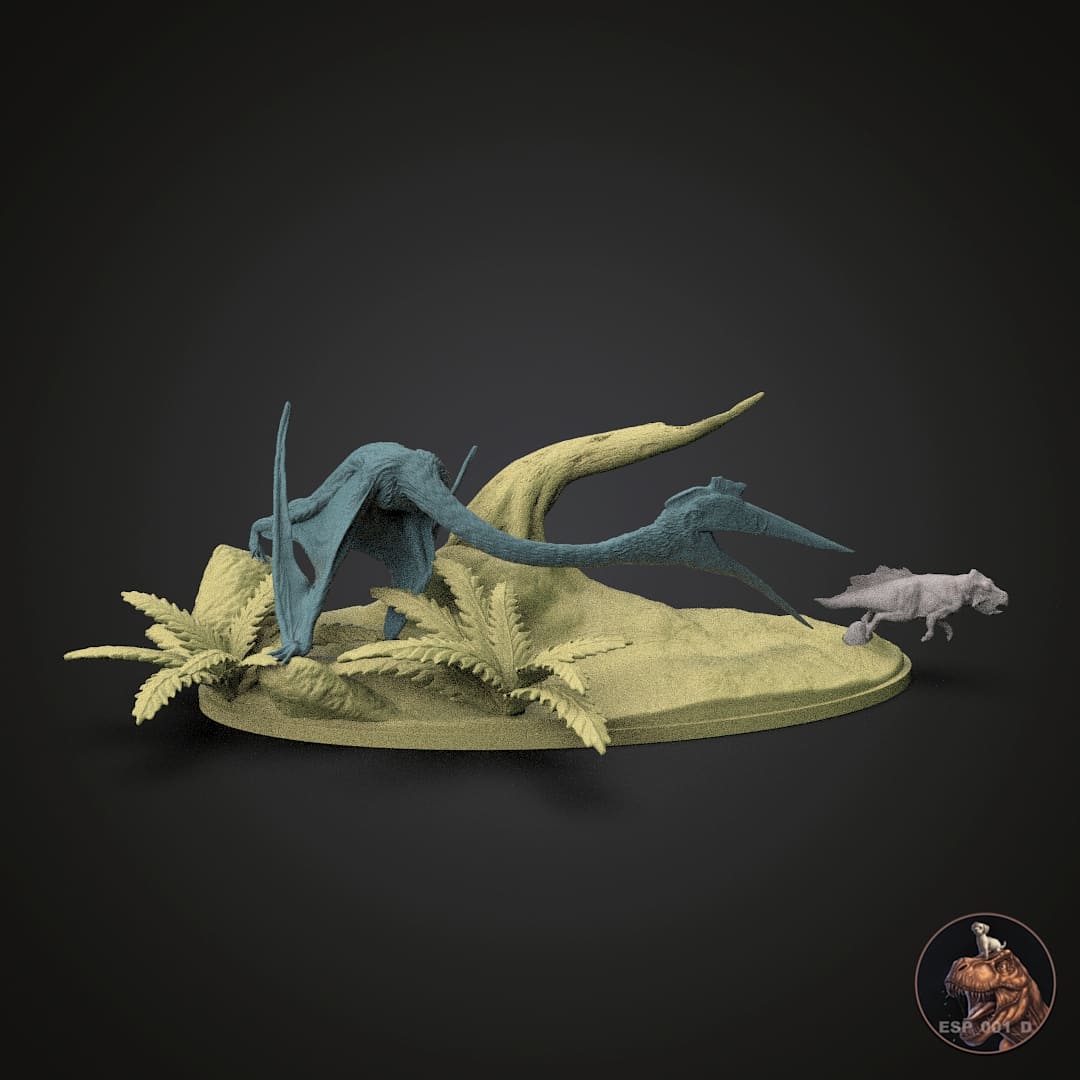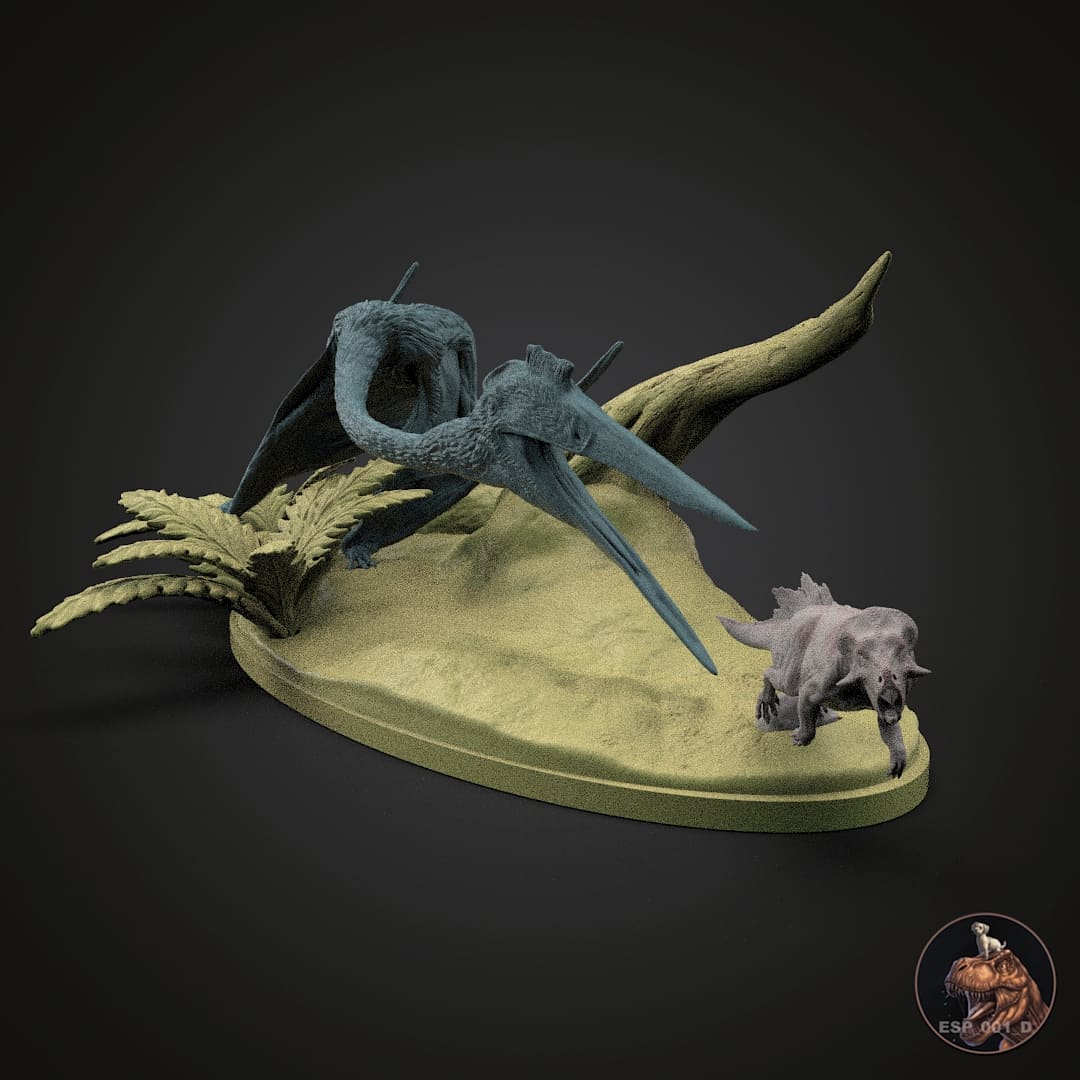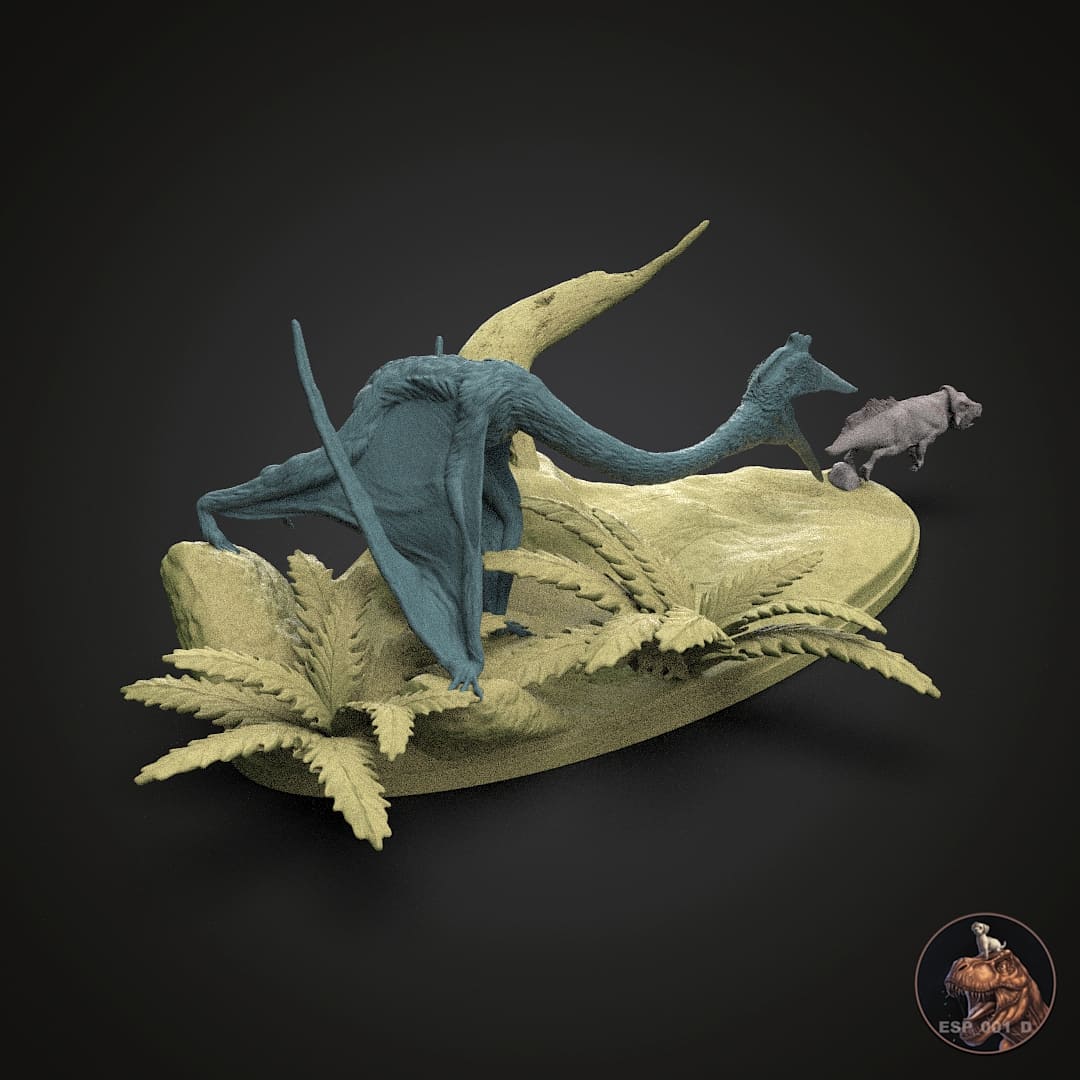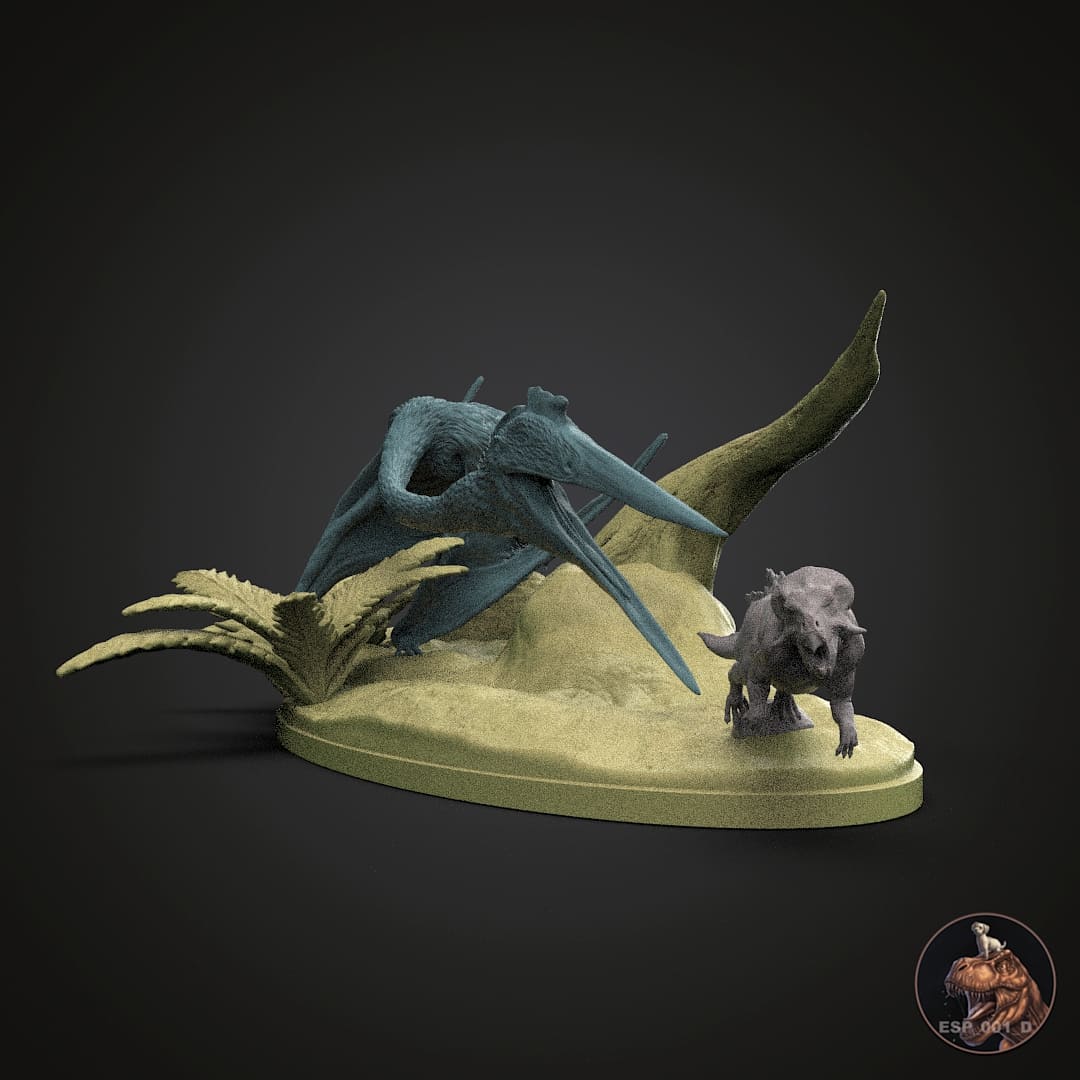




Quetzalcoatlus / Leptoceratops
Do you want another scale?
Contact us and we will make it possible!
How will you receive your replica?
In the unprimed and primed variants, you will receive the complete replicas except for the large models, where you will receive an assembly kit.
In the hand-painted variant, the replicas will be delivered complete.
How does the painting service work?
We created a private chat for you where you will have direct communication with our painter , being able to choose your preferred color schemes and follow the hand painting process closely.
Pairs well with

Quetzalcoatlus / Leptoceratops
If you have any questions, you are always welcome to contact us. We'll get back to you as soon as possible, within 24 hours on weekdays.
Shipping Information
Visit our shipping policy page to find all the information.
Customer Support
Give us a few details and we’ll offer the best solution. Connect by chat or email.
We are available 24/7.
FAQ’s
Visit our FAQ's page to find answers to common questions.
Contact Us
We'd love to hear from you. We are here to help. Visit our contact page to send us a message.
Product details
During the Late Cretaceous, the terrestrial ecosystems of what is now North America supported a diversity of life forms, including both small herbivorous dinosaurs and large flying reptiles. In this context, the potential interaction between Quetzalcoatlus northropi and Leptoceratops gracilis represents an interesting example of ecological dynamics between predator and prey in semi-arid Maastrichtian environments.
Quetzalcoatlus, one of the largest known pterosaurs, belonged to the family Azhdarchidae, characterized by large wingspans, an extremely elongated neck, an elongated skull with a toothless beak, and adaptations for both gliding and efficient ground travel. It is estimated that Quetzalcoatlus could have reached a wingspan of up to 10–11 meters and a height comparable to that of a giraffe when moving with its wings folded. Despite its fame as a flying reptile, its feeding behavior is thought to have included a terrestrial hunting strategy, similar in some respects to that of modern-day storks or marabous, but on a colossal scale.
This terrestrial lifestyle is inferred not only from the morphology of its limbs, but also from the biomechanics of its movements, which would have allowed Quetzalcoatlus to walk with quick, long strides, elevating its skull several meters above the ground and using its long neck to visually scan wide areas in search of food. Its diet was likely generalist and opportunistic, including carrion, small vertebrates, eggs, and even juvenile dinosaurs. Within this spectrum of potential prey, Leptoceratops emerges as a plausible option.
Leptoceratops gracilis was a small, basal ceratopsian dinosaur that measured between 2 and 2.5 meters in length and weighed about 70–100 kilograms. Equipped with a robust body, short but strong limbs, and a head with a horny beak, Leptoceratops was well adapted to a low-lying herbivorous diet. Its skull lacked prominent horns or a developed frill like its more derived relatives, but its bone structure reveals strong jaw muscles and a bite capable of processing fibrous vegetation. As prey, it would have presented a challenge to an aerial predator, but a realistic possibility for a terrestrial hunter like Quetzalcoatlus, especially if it was a juvenile or isolated specimen.
The ecological relationship between the two species can be better understood by considering comparative ethology and paleoenvironment. On an open plain, Quetzalcoatlus would have used its large stature and keen vision to locate prey at a distance. Once it identified a solitary Leptoceratops, possibly a juvenile, the pterosaur could have initiated a terrestrial run using its forelimbs for support, in a quadrupedal style that allowed it to move quickly despite its size. The attack would have been carried out with a swift thrust of the neck and a bite or blow with the beak, possibly to immobilize or injure the prey before ingesting it whole or in fragments, similar to modern-day carrion or predatory birds.
Although no direct fossil evidence of this specific interaction has been found, contemporary records of both species, together with the functional anatomy of Quetzalcoatlus, suggest that this large pterosaur may have played a significant role as a terrestrial predator of medium-sized vertebrates, including small ornithischians such as Leptoceratops. This predator-prey interaction underscores the complexity of Late Cretaceous ecosystems, in which the boundaries between flying and terrestrial, scavenger and hunter, blurred in favor of highly specialized mixed ecological strategies.
Approximate measurements of the Quetzalcoatlus:
- 1:35 Scale Diorama Assembly Kit
- Length 198 mm
- Height 81 mm
- Width 132 mm
Information about aftershocks
Collector's item ; Hyper-realistic replica, highly detailed and with a high degree of scientific precision.
Made to scale, prototyped in resin and with a scenic base in most of the models offered. If you like miniatures, both for collecting and for painting, we offer you a wide variety of scale replicas; All of them related to dinosaurs, extinct prehistoric fauna and current fauna.
So if you love dinosaurs and animals as much as we do, this is your favorite store to collect and paint them :)
We are authorized distributors of all the replicas and figures we offer. We use 3D printers with 8K - 14K resolution, and high-quality resins with additives to improve hardness and flexibility, thus offering replicas of impeccable quality.
Different scales will be used to make the replicas (depending on the size of the species), although we are open to making other suggested scales upon request as long as they fit in our printing trays, for which you will have to contact us via email and request the required size.
Replicas are supplied with the option of airbrush priming in dark grey. If you require another colour, please let us know which one you prefer in the box with special instructions for the seller. Without priming, we do not guarantee that the resin will accept paint.
We also offer the option of choosing a professionally painted replica, which is agreed upon throughout its development with the painter, through a private chat available.
Complete replica (one piece): We supply complete replicas in those models that are small, and models that are medium, large or not very bulky, will have the prerogative of being presented as a complete replica or assembly kit as the case may be.
Complete replicas will be supplied separately from their base.
Replica assembly kit: We supply replicas whose models are large, very large or bulky, only with this option.
The indicated replicas (generally composed of base, head, body and tail) will come prepared for the subsequent assembly that will be required by the client, by sanding, putty, adhesive or technique chosen by the client.
All replicas are thoroughly inspected before shipping and will be carefully packaged to prevent damage during transport.
Information about the models
The poses of the models aim to represent each character in the most scientifically viable way, thus revealing the life and customs of prehistoric and modern fauna.
Each character has its own personality and develops in different life scenarios; birth, adolescence and play, hunting, feeding, fighting, courtship, death and many other scenes from their daily life, always from the creative perspective of their designers.
Handmade
All orders are individually prepared on the cutter for subsequent prototyping, obtaining a resin part that will require post-processing by manual and ultrasonic cleaning, support removal, ultraviolet curing, labeling and packaging.

We are authorized distributors
We offer both our own physical replicas and those that have been modeled by many of the best 3D designers, in order to offer you the greatest possible variety.
Frequently Asked Questions
If you have any questions about products, orders or shipping, please read our FAQ page to learn more.

